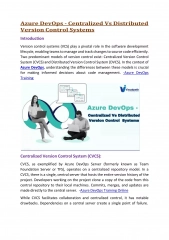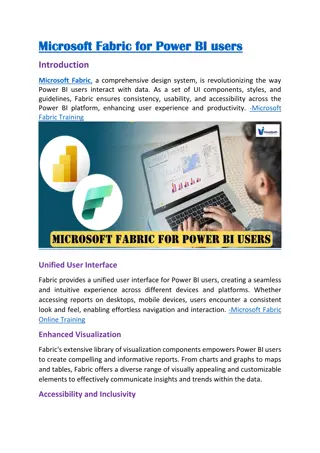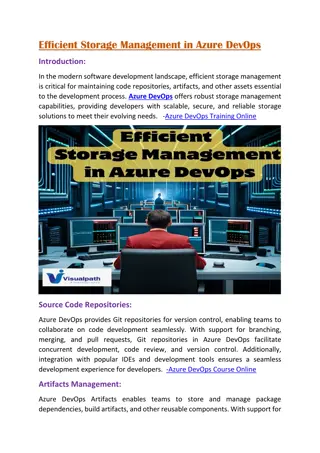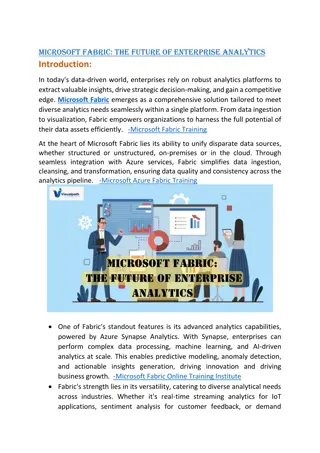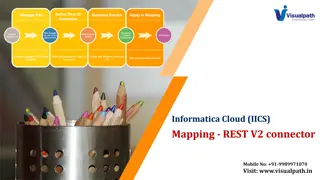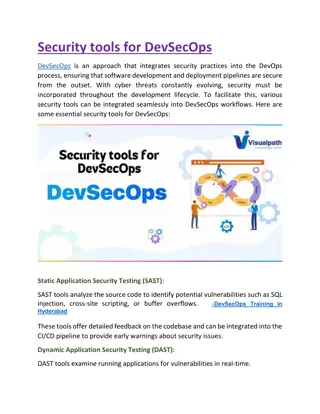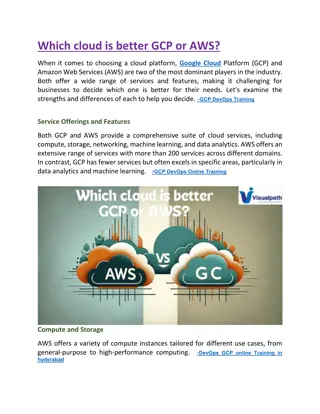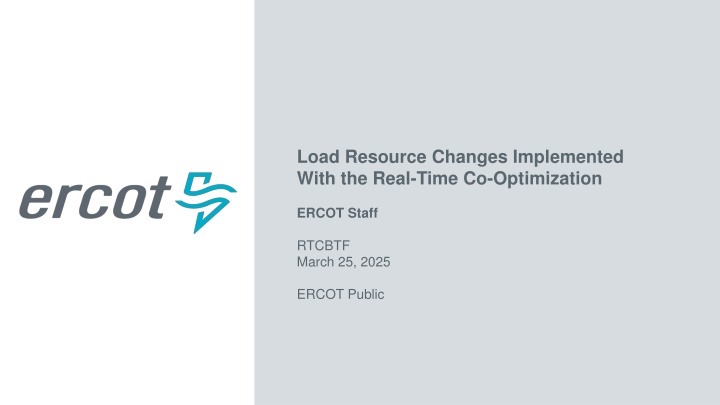
Changes in Real-Time Co-Optimization of Load Resources - ERCOT Update
Discover the key changes implemented with the Real-Time Co-Optimization project by ERCOT affecting Load Resources, Resource Entities, and Qualified Scheduling Entities. Learn about new terms and concepts, Day-Ahead Market changes, Telemetry adjustments, Real-Time Market operations, deployment and recall of Load Resources, and performance analysis. Stay informed about the latest developments impacting Load Resources in the energy sector.
Uploaded on | 4 Views
Download Presentation

Please find below an Image/Link to download the presentation.
The content on the website is provided AS IS for your information and personal use only. It may not be sold, licensed, or shared on other websites without obtaining consent from the author. If you encounter any issues during the download, it is possible that the publisher has removed the file from their server.
You are allowed to download the files provided on this website for personal or commercial use, subject to the condition that they are used lawfully. All files are the property of their respective owners.
The content on the website is provided AS IS for your information and personal use only. It may not be sold, licensed, or shared on other websites without obtaining consent from the author.
E N D
Presentation Transcript
Load Resource Changes Implemented With the Real-Time Co-Optimization ERCOT Staff RTCBTF March 25, 2025 ERCOT Public
Introduction Key changes implemented with the RTCB project affecting Load Resources (LRs), their Resource Entities, and Qualified Scheduling Entities (QSEs) New Terms and Concepts Day-Ahead Market (DAM) Changes Telemetry Changes for NCLRs and CLRs Real-Time Market (RTM) and Operational Changes Deployment and Recall of Load Resources Performance Analysis Monthly Reports This is not an all-encompassing review of changes Focus is on LRs 2 PUBLIC
New Terms and Concepts SCED is optimizing energy and AS in real-time Energy and AS Awards in real-time are based on telemetered information In real-time, NCLRs can Self-Provide RRS and ECRS subject to validation rules LRs can also participate in real-time AS markets and their AS awards are based on a valid RTM offer for AS The SASM has been eliminated Telemetry changes (see RTC Telemetry Changes on RTC+B Training webpage) Proxy offers will be used in the RTM for all Resources, including LRs, when the QSE- submitted AS offers don t cover the telemetered AS capabilities For CLRs, Resource-specific deployments replace the QSE-level deployments AS Imbalance remains but the specific calculations are changing (see RTC+B Settlement Overview on RTC+B Training webpage) 3 PUBLIC
Day-Ahead Market (DAM) Changes LRs can participate in DAM provided they are qualified to provide the AS (no change) Existing qualification limits to provide AS will be retained for all LRs, but new Resources will be required to demonstrate their capability through a qualification test No additional testing for existing LRs ASDCs will be added to the DAM optimization and will be used in the determination of the AS quantities procured and the MCPCs QSEs then prepare COPs to show projected Resource availability and their AS capability coming out of DAM No Changes Required AS Plan posted by 06:00 in the Day-Ahead for LSE QSEs After DAM runs, AS Awards are published based on the DAM AS procurement Participation of CLRs in DAM will be similar to Generation Resources 4 PUBLIC
Telemetry Changes for NCLRs and CLRs Resource status for NCLRs or CLRs will either be ONL or OUTL. Eliminated Statuses ONRGL, FRRSUP, FRRSDN, ONCLR, ONRL, ONECL, and ONFFRRRSL. Resource specific AS Responsibility and AS Schedule will be eliminated QSE telemeters current capability to provide RRS, ECRS and Non-Spin: Self-Provided capacity for RRS-UFR and ECRSM w/ UFR showing as Armed NCLR telemeters its ECRS capability in the form of a 10-minute blended ramp rate measured as MW/min i.e. 3.5 MW/min = 35 MW of capability NCLR telemeters its Non-Spin capability in the form of a blended 30-minute Ramp Rate i.e. 3.5 MW/min = 105 MW of capability ERCOT sends AS Awards via ICCP every 5 min For CLRs, the UDBP is replaced by the UDSP See RTC Telemetry Changes on RTC+B Training webpage ERCOT Nodal ICCP Communications Handbook RTC+B v4.03 5 PUBLIC
Real Time Market and Operation for CLR and NCLRs Comparison of Load Resource Changes to ESRs and GRs Comb Cycle A/S Award Type Gen Quick Start Sync Cond ESR CLR NCLR UDSP-L UDSP-L X X UDSP-L UDSP-L Key: Regulation UDSP-S UDSP-S UDSP-S UDSP-S UDSP-S ASM ASM: AS Manager XML Dispatch Online NonSpin ASM ASM UDSP-L: LFC telemetry dispatch Offline NonSpin UDSP-S UDSP-S Freq UDSP-S UDSP-S UDSP-S: SCED Dispatch and in telemtry ECRSS (SCED) ASM Freq: Responds to frequency ECRSM (Manual) UDSP-S Offline ECRS Notes about NCLRs: ECRS and RRS-UFR will deploy together. Can register and qualify for RRS-UFR or RRS-FFR but not both. Notes about CLRs: CLRs participate like On-Line GRs UDSP-S UDSP-S Freq UDSP-S UDSP-S RRS-PFR (inc SyncCond) ASM RRS-UFR Freq Freq Freq ASM RRS-FFR 6 PUBLIC
RTM and Operational Changes for CLRs 1) CLRs offer in real-time and are awarded and deployed by SCED on a resource-specific basis 2) PFR required if seeking qualification of RRS and/or Regulation (no change) 3) Required to provide PFR if qualified for RRS and/or Regulation 4) Need to submit offers in real-time to cover telemetered AS capabilities if showing ONL status, otherwise MMS will use a proxy offer for energy and AS 5) Awards and deployments will respect operating limits including MPC, LPC and ramp rates 6) In general, participate like a conventional GR No Deployment or Recall Changes for CLRs 7 PUBLIC
RTM and Operational Changes for NCLRs 1) Offers, Awards and Instructions are made in real-time and are resource specific 2) Awards for AS will be subject to limits/constraints for each service type; e.g. additional awards for RRS- UFR 3) If NCLR is qualified and showing ONL, SCED will award AS using ASDCs and Resource Offers 4) NCLRs may Self-Provided RRS and ECRS subject to validation rules a) Under-frequency relays must be armed b) RRS and ECRS self-provided capacity cannot exceed their net Ancillary Service position for the QSE (AS awards, self-arranged AS, and AS Trades at portfolio level) c) A Resource validation against telemetered AS capabilities 5) Very important to watch NPC, LPC, Status and Ramp Rates 6) Note that awards can be partial amounts of AS (e.g. 20 MW offer; 10 MW award) 7) QSEs have the ability to update AS offers in real-time 8) SCED will use a proxy offer for AS if NCLR is showing status of ONL, has headroom, and no offer submitted or offer does not cover the amount of AS available from the NCLR 8 PUBLIC
Deployment and Recall for NCLRs 1) Manual deployment for ECRS and RRS is done like today: a) Operator dials in a MW value, e.g. 500 MW, and then the AS Deployment manager issues resource specific instructions: b) ECRSM No relay or relay not armed, then c) ECRSM UFR armed, then d) ECRSM and RRS-UFR both deployed at the same time when NCLR has an armed UFR, then e) RRS-UFR 2) Deployment of NCLRs providing Non-Spin will be like today; manual deployment by ERCOT Operator (no change) 3) No Group Assignments for deployment or recall 4) Deployment instructions are resource specific and done by XML instruction (no change) 5) NCLRs need to remain deployed until recalled (no change) 6) Once deployed, NCLRs are subject to an Imbalance charge similar to today (no change) 7) Once recalled, it s important to cover AS financial position by returning to service or covering any shortage thru allowed substitution or market trades (no change) 8) The 3-hour return to service was a compliance metric that has been eliminated a) AS positions for future hour are financial, so this compliance metric is no longer applicable 9 PUBLIC
Performance Analysis for CLRs 1) CLR is evaluated against UDSP instead of UDBP 2) Performance is based on CLREDP methodology in Section 8 of the Protocols (no change) 3) Evaluated for PFR response to FMEs if qualified for RRS and/or Regulation (no change) 4) No change to compliance metrics 10 PUBLIC
Performance Analysis for NCLRs 1) Evaluate QSE level and Resource Specific event performance from time of deployment to recall instruction (no change) 2) Baseline capacity uses a 5 min average of NPC prior to instruction date/time stamp (no change) 3) Instructed capacity is part of the XML instruction (no change) 4) Resource deployment performance must be greater than 95% of instructed value (no change) 5) Evaluation also looks at over-performance and should be less than 150% of instructed value (no change) 6) Can be suspended if multiple failures in a 365-day period of time (no change) 7) Failures fall into the following categories (no change) a) Fail to deploy based on ramp time limit b) Fail to meet the 95% minimum requirement c) Exceed the 150% limit particularly for RRS and ECRS (excess UFR response) d) Fail to remain deployed/return to service prior to getting a recall instruction 8) Suspensions remain the same (2 failures with 365 days and the NCLR may be suspended (no change) 11 PUBLIC
Reports 1. NCLR Deployment Performance Report for AS (NSRS, ECRS and RRS) are done monthly a. QSE Level Report is done on a pass/fail basis for each event secure report 1. Individual report for all QSEs for RRS and ECRS and then a 2nd Report for Non-Spin b. Resource specific report done for each QSE on a pass/fail basis certified report 1. Individual report for each QSE for RRS and ECRS and then a 2nd report for each QSE showing all NCLRs providing Non-Spin 2. CLR Deployment Performance Report for AS (NSRS, ECRS and RRS) are done monthly a. Monthly report on CLREDP performance b. Event Performance for FMEs and PFR response from CLRs (if required) 3. Market Participation Report for all Load Resource a. Monthly report for LR Awards in RTM providing AS, broken down by type (NCLR and CLRs), CMZ and Delivery Hour 12 PUBLIC
Questions and for more info contacts Demand Integration ERCOTLRandSODG@ercot.com Mark Patterson Anthony Pataray Donald House Franky Wong 13 PUBLIC
Appendix - Acronyms Ancillary Services (AS) Ancillary Service Demand Curve (ASDC) Controllable Load Resource (CLR) Current Operating Plan (COP) Day-Ahead Market (DAM) ERCOT Contingency Reserve Service (ECRS) High Sustained Limit (HSL) Load Frequency Control (LFC) Load Resource (LR) Load Serving Entity (LSE) Locational Marginal Price (LMP) Low Power Consumption (LPC) = (LSL in EMS) Low Sustained Limit (LSL) Max Power Consumption (MPC) = (HSL in EMS) Market Clearing Price for Capacity (MCPC) Net Power Consumption (NPC) Nodal Protocol Revision Request (NPRR) Non-Spinning Reserve Service (Non-Spin) Operating Reserve Demand Curve (ORDC) Qualified Scheduling Entity (QSE) Real-Time Co-optimization (RTC) Real-Time Market (RTM) Regulation Down (Reg-Down) Regulation Up (Reg-Up) Resource Limit Calculator (RLC) Responsive Reserve Service (RRS) Security-Constrained Economic Dispatch (SCED) Supplemental Ancillary Service Market (SASM) System-Wide Offer Cap (SWOC) Under-Frequency Relay (UFR) Value of Lost Load (VOLL) 14 PUBLIC
Examples Self- Self- Current Capability to provide ECRS (10min) Ramp Rate (MW/min) Non-Spin (30min) Ramp Rate (MW/min) provide d RRS UFR(M provide MPC LPC d ECRS (MW) UFR (MW) W) Scenario Question Answers The current capability to provide UFR should indicate the resources full availability (35 MW). The ECRS ramp rate should be telemetered as a MW/min value that can be achieved in 10 minutes, in this case 35/10 = 3.5 MW. SCED will assign awards based on both telemetered values. 0Should the Current Capability to provide RRSUF and the ECRS ramp rate reflect the NCLR's total availability to provide AS (35MW), or should it reflect the total availability to provide additional AS (0MW)? 35 0 25 10 ? ? Resource is Self-providing 25MW RRS UFR and 10MW of ECRS. They have no additional room to provide more AS. Yes, SCED will know the NCLR cannot provide NSRS while self-providing due to the UFR telemetered status. Current capability to provide UFR will be at least 35 MW and could be as high as 45 MW depending on their qualified MW for RRSUF. Ramp rate for ECRS = Qualified MW for RRSUF/10. 45 0 25 10 ? ? 0 Resource is Self-providing 25MW RRS UFR and 10MW of ECRS. They have 10MW of additional room to provide AS. If the NCLR is also qualified to provide NSRS, would SCED know the NCLR cannot provide NSRS while also Self-providing RRS+ECRS? Yes, the NCLR can be awarded additional ECRS capacity based on the validation rules that will be used; e.g. no more than 50% of ECRS can be awarded to NCLRs 45 0 25 10 ? ? 0Can the NCLR be awarded additional ECRS capacity using the extra 10 MW of available capacity Resource is Self-providing 25MW RRS UFR and 10MW of ECRS. They have 10MW of additional room to provide AS. The value shown in column F should show the amount the NCLR is qualified for RRSUF. The value shown in column G should equal the value in column F divided by 10. The value shown in column H should equal the amount of Non-Spin the NCLR is qualified for divided by 30. 15 PUBLIC





